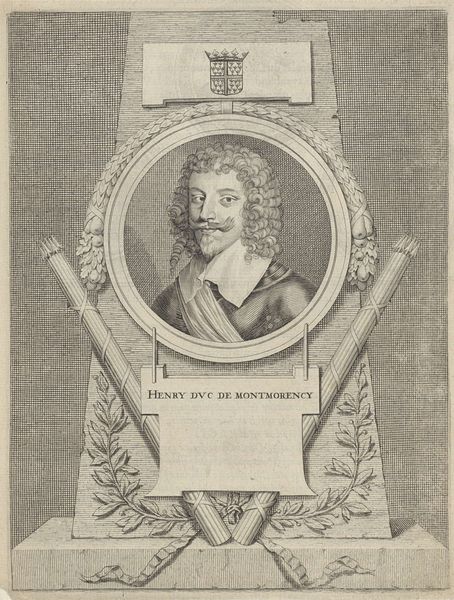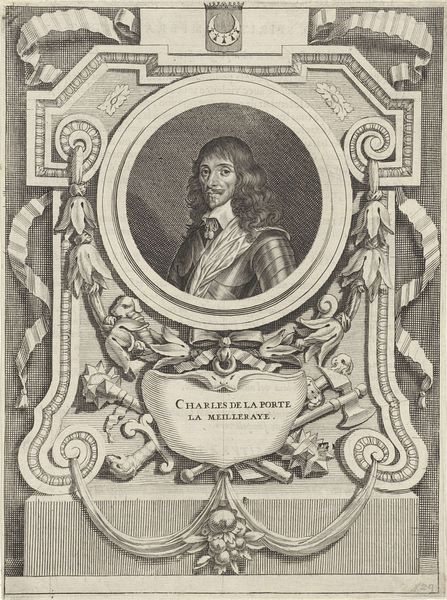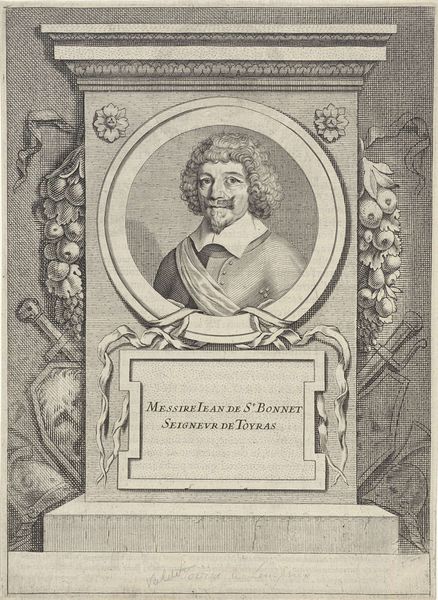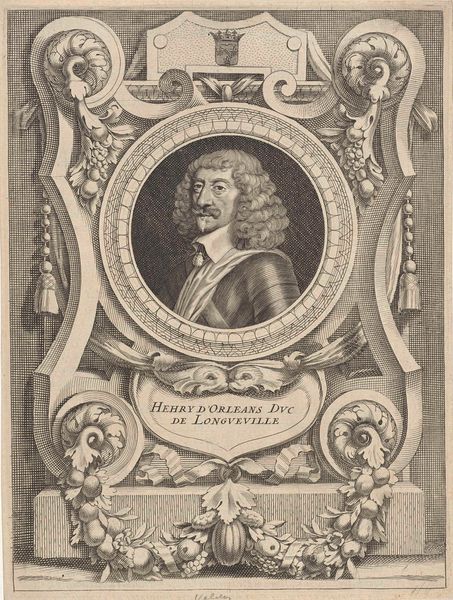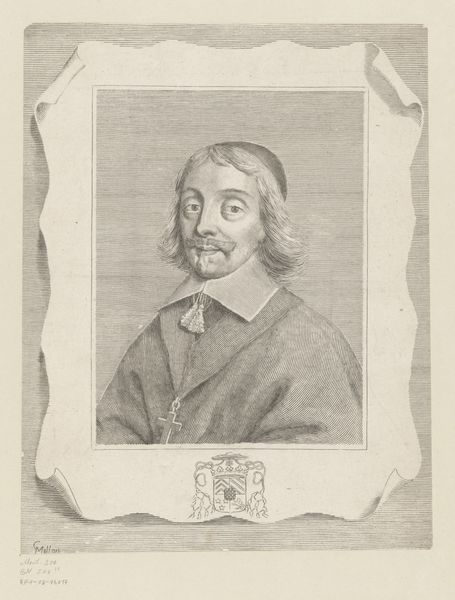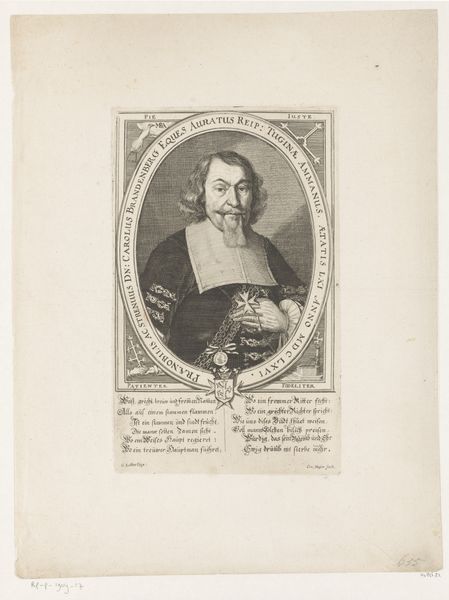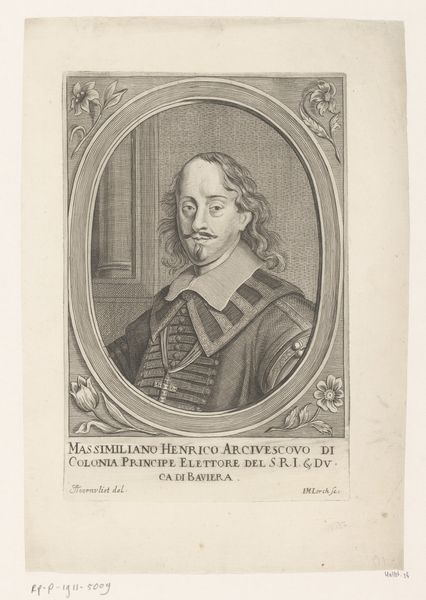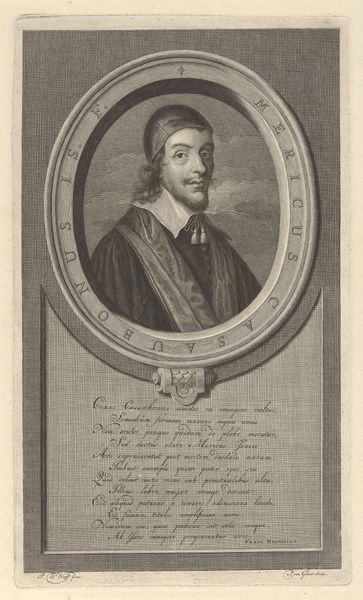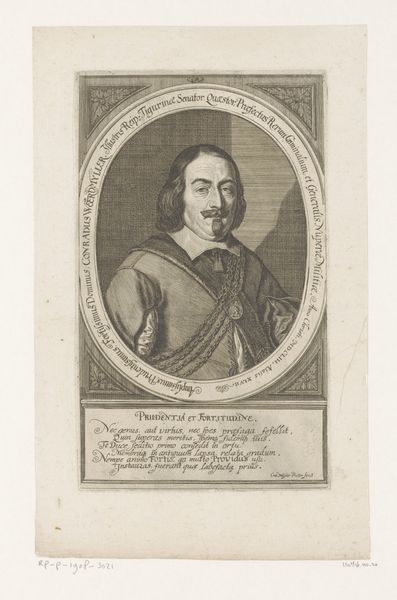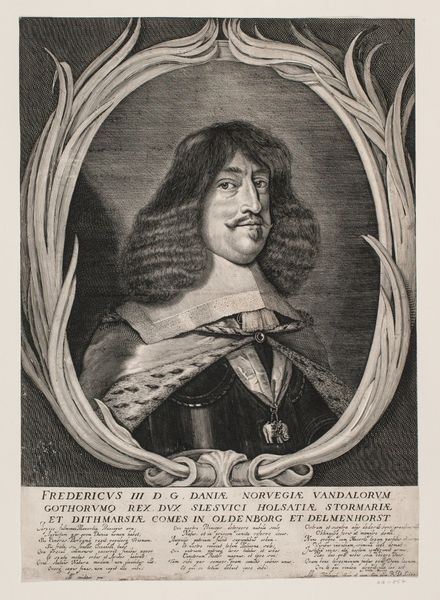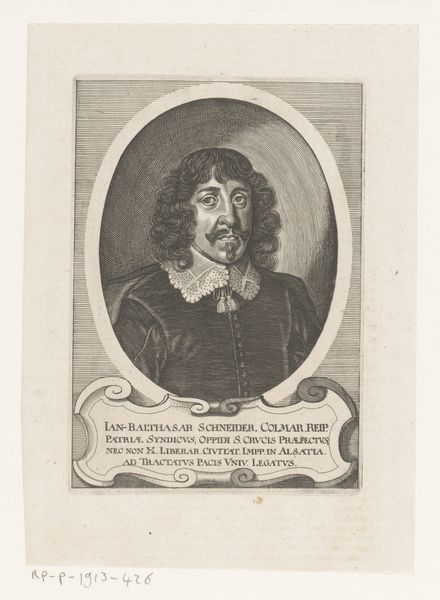
print, intaglio, engraving
#
portrait
#
baroque
# print
#
intaglio
#
old engraving style
#
figuration
#
engraving
Dimensions: height 284 mm, width 212 mm
Copyright: Rijks Museum: Open Domain
This portrait of Louis d'Arapaion was made by Johannes Valdor II, likely in the mid-17th century, through engraving. Look closely, and you’ll notice that the entire image is made of tiny, carefully placed lines incised into a metal plate, which was then inked and printed onto paper. Unlike painting, where color and tone are built up gradually, engraving relies on the precision and control of the artist’s hand to create depth and shadow. The act of engraving transforms the artist into a kind of machine, meticulously reproducing images for a growing audience. It speaks to the rise of print culture and the increasing demand for accessible art in the 17th century. This wasn’t just about aesthetics; it was about disseminating information and shaping public opinion in an era of immense social and political change. So, next time you look at an engraving, remember the labor, the skill, and the social context that brought it into being. It’s a reminder that art is always connected to the world around it.
Comments
No comments
Be the first to comment and join the conversation on the ultimate creative platform.
